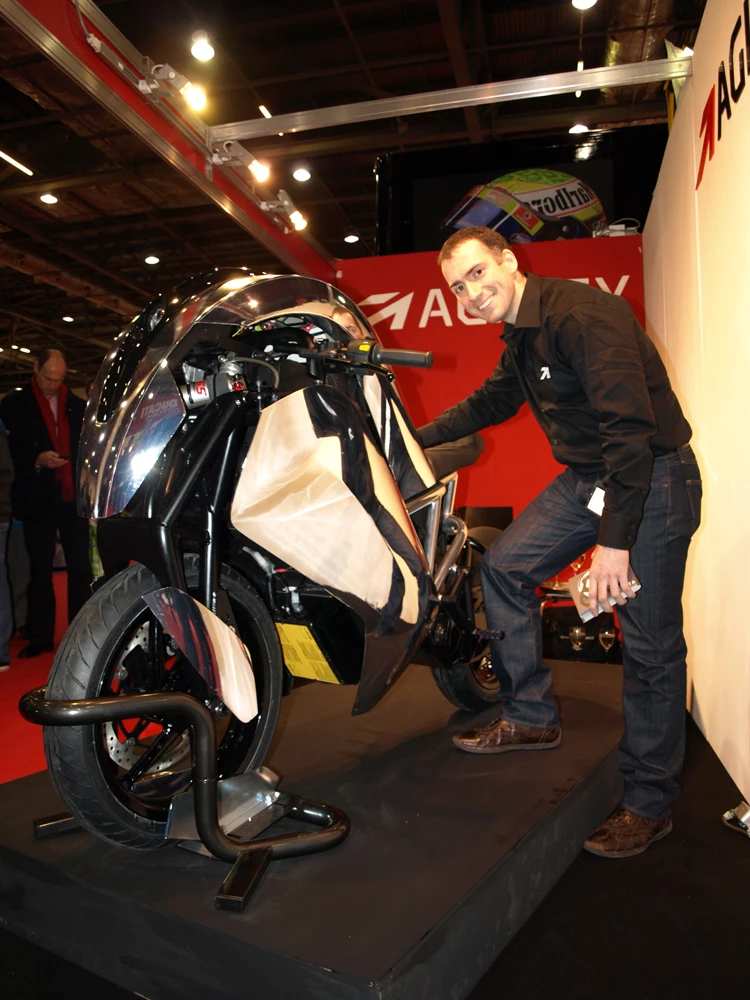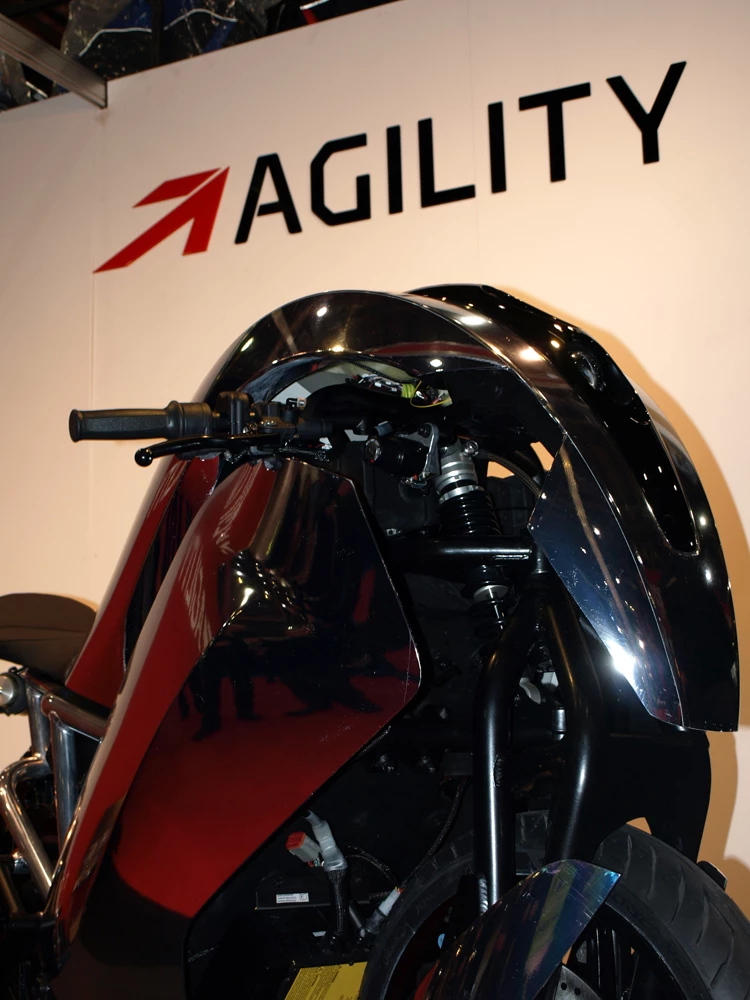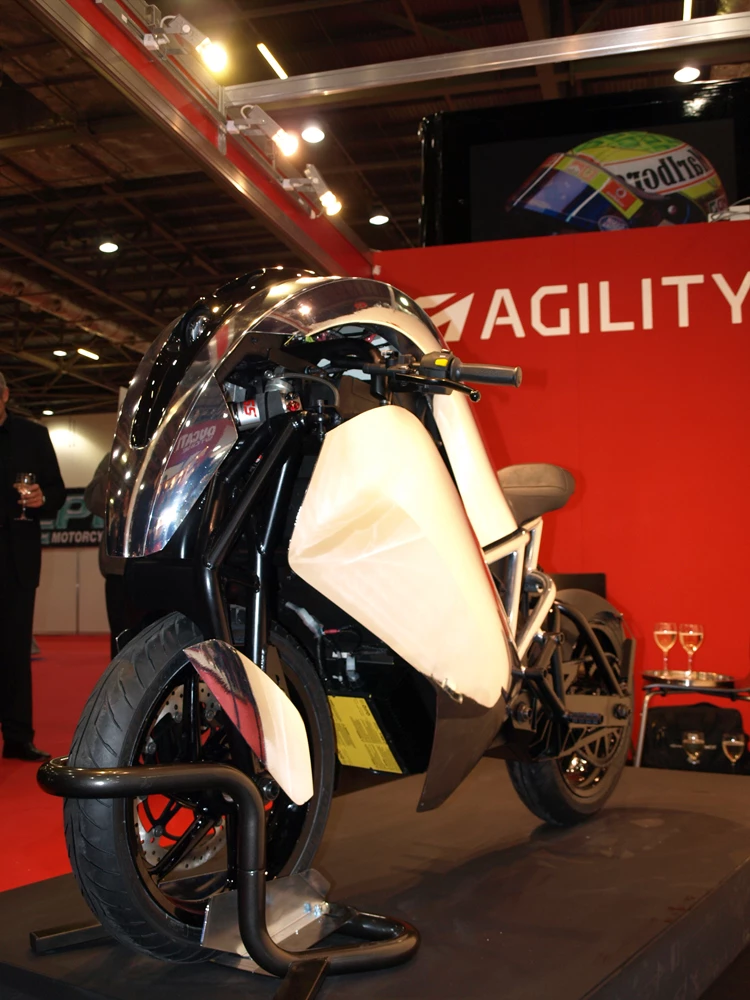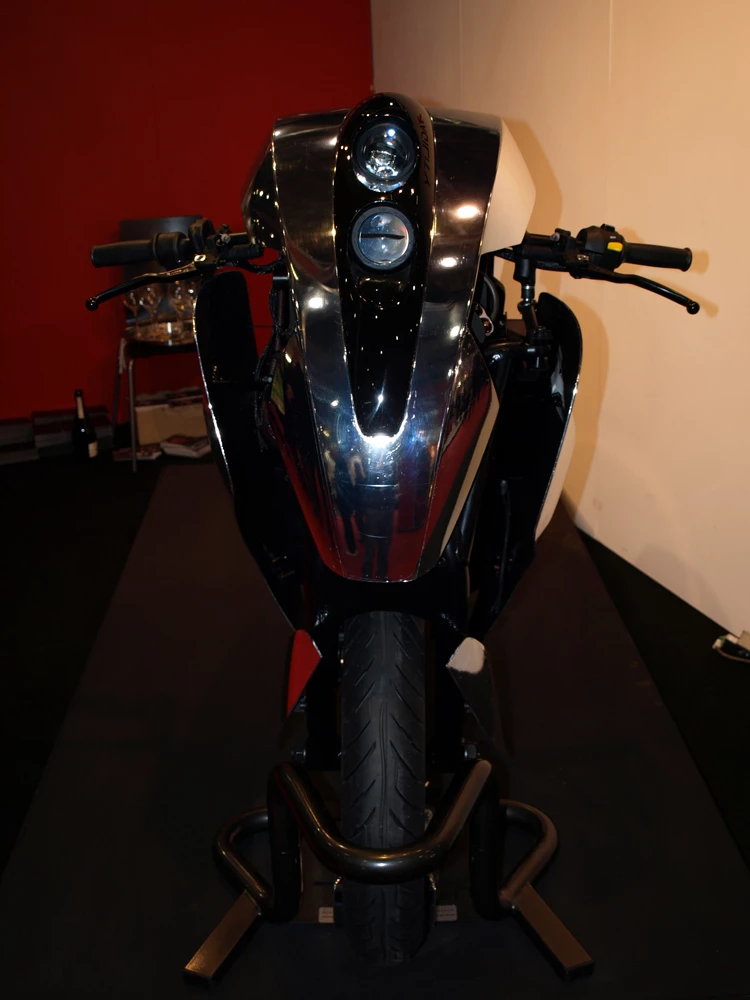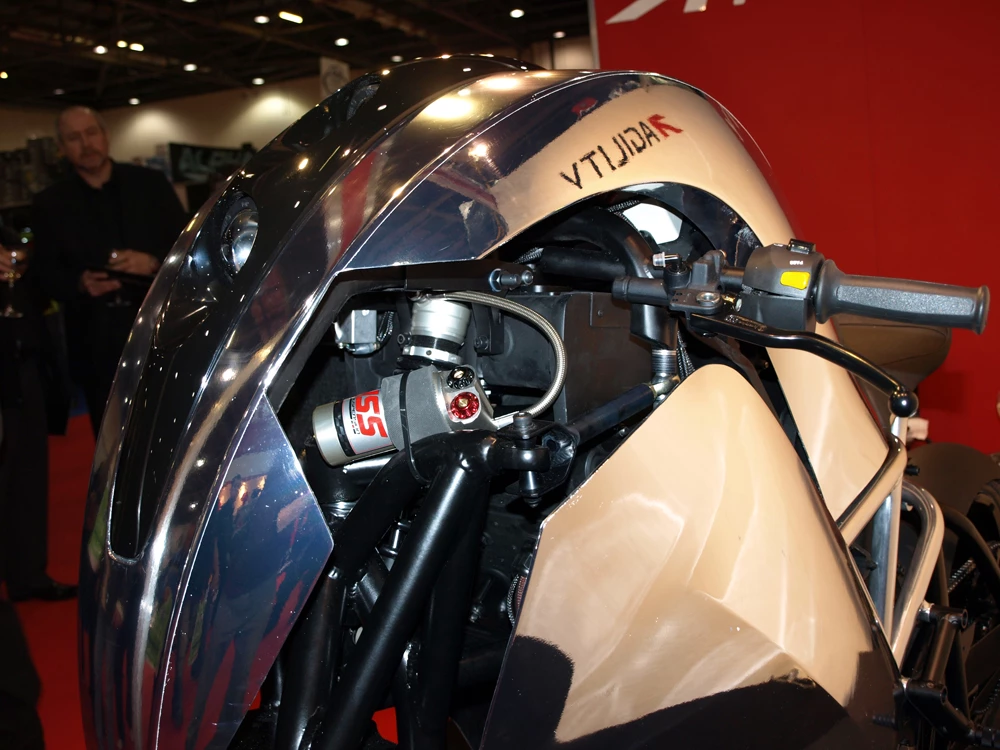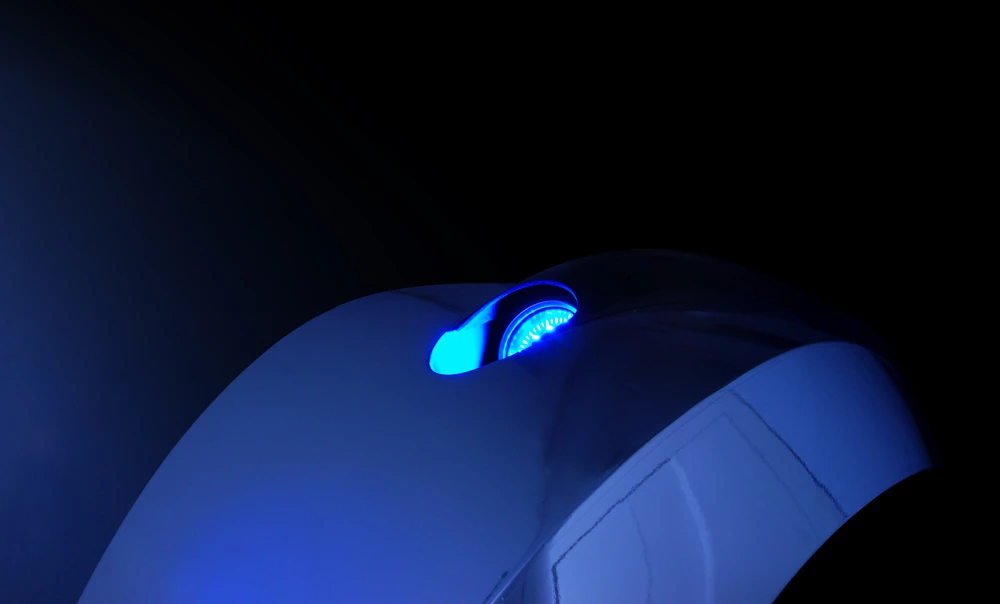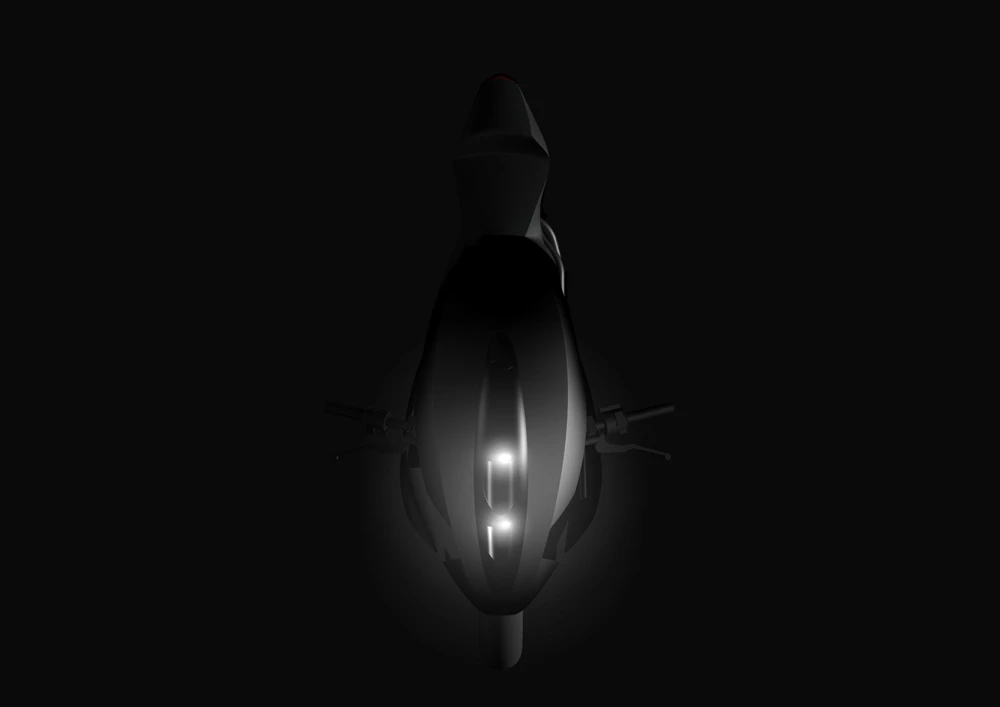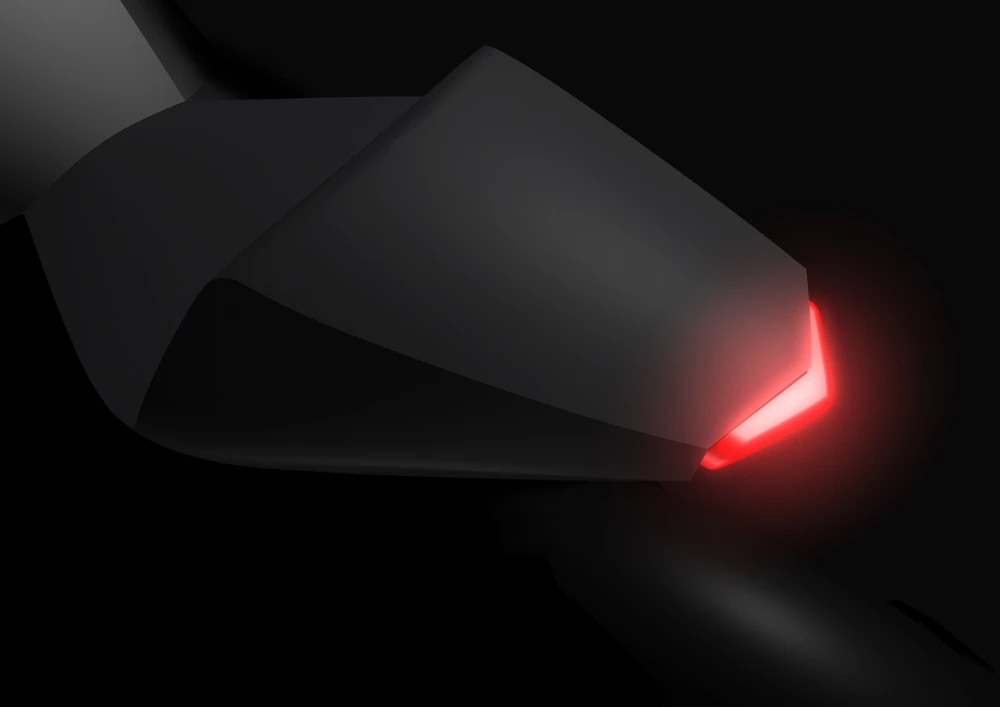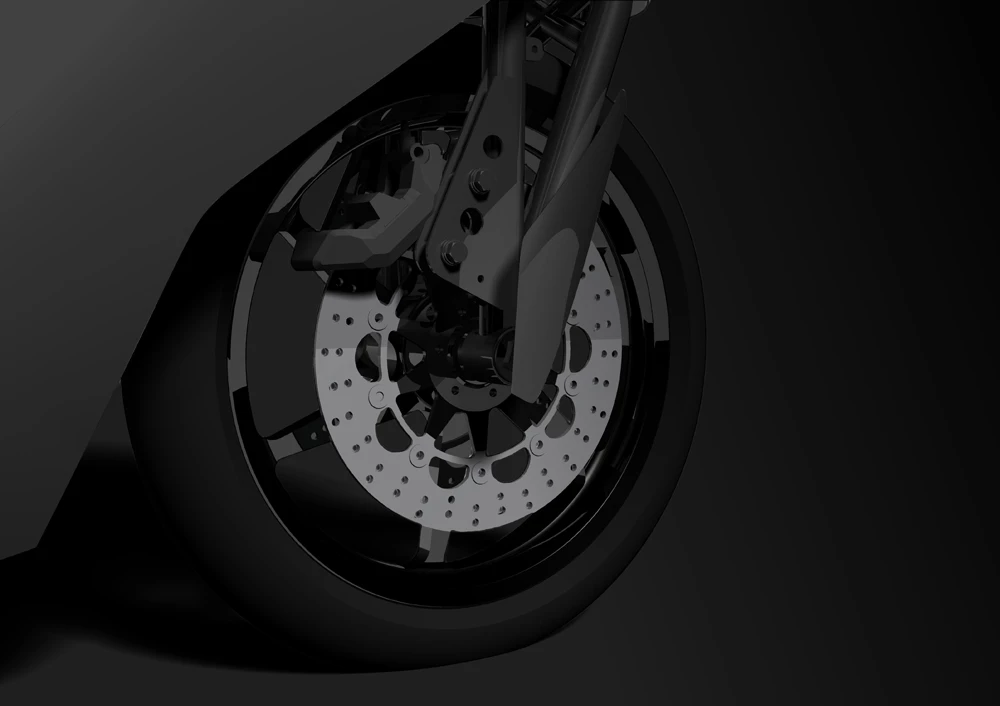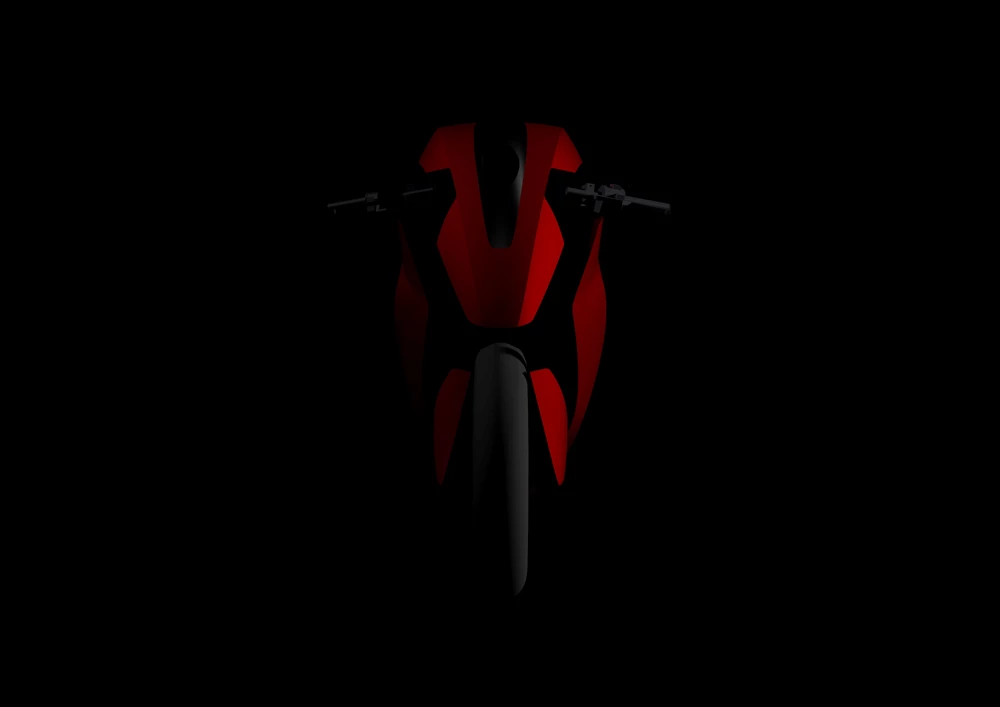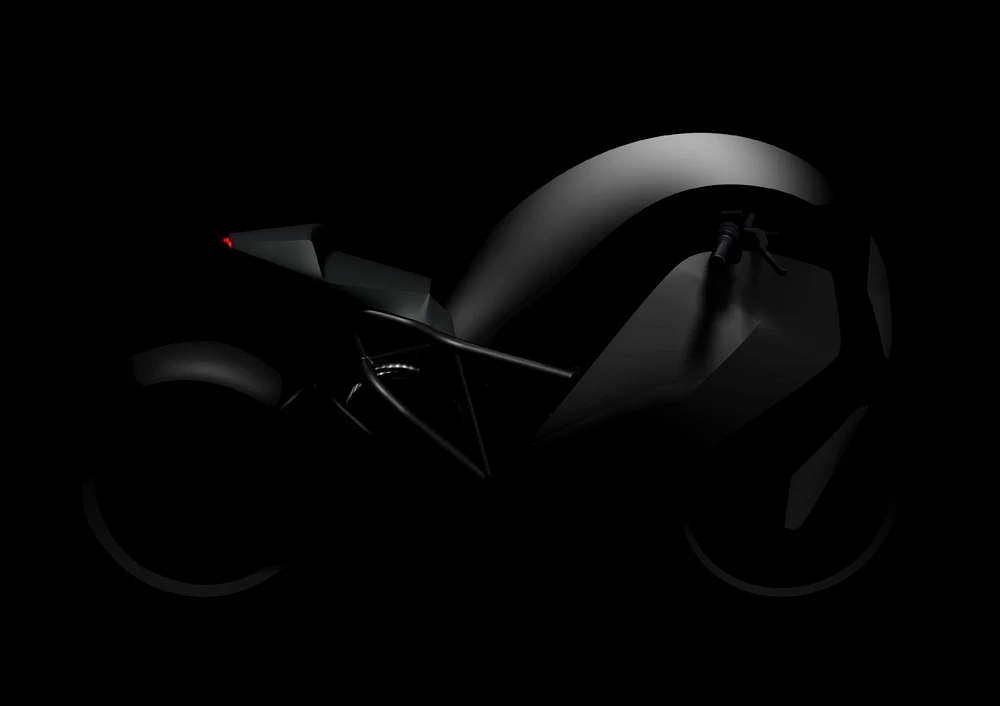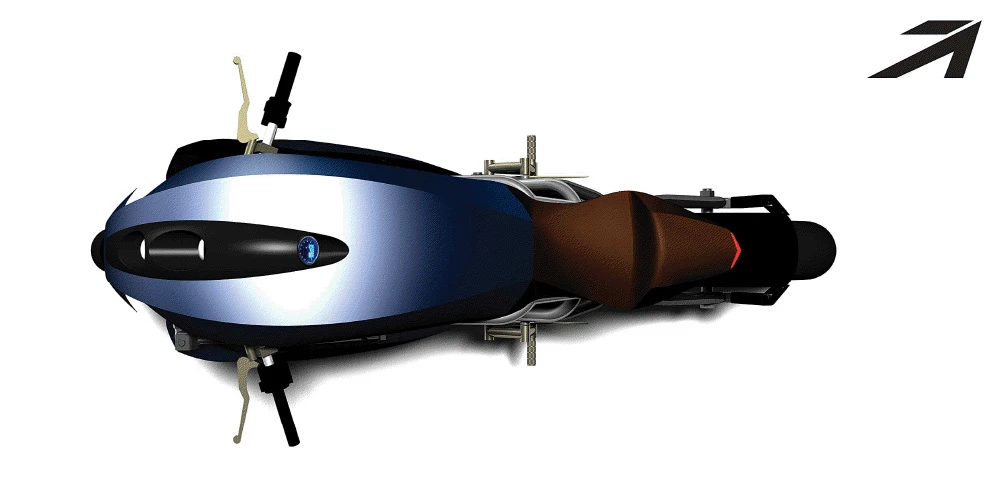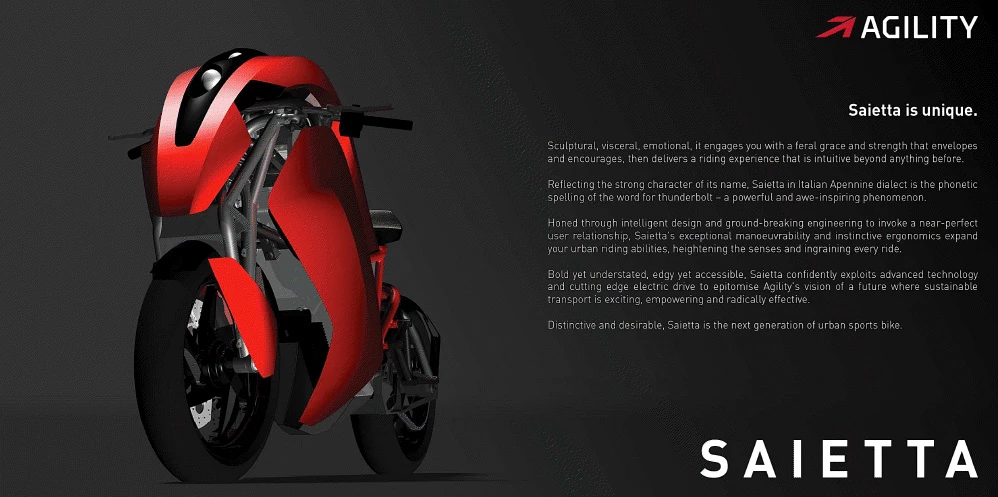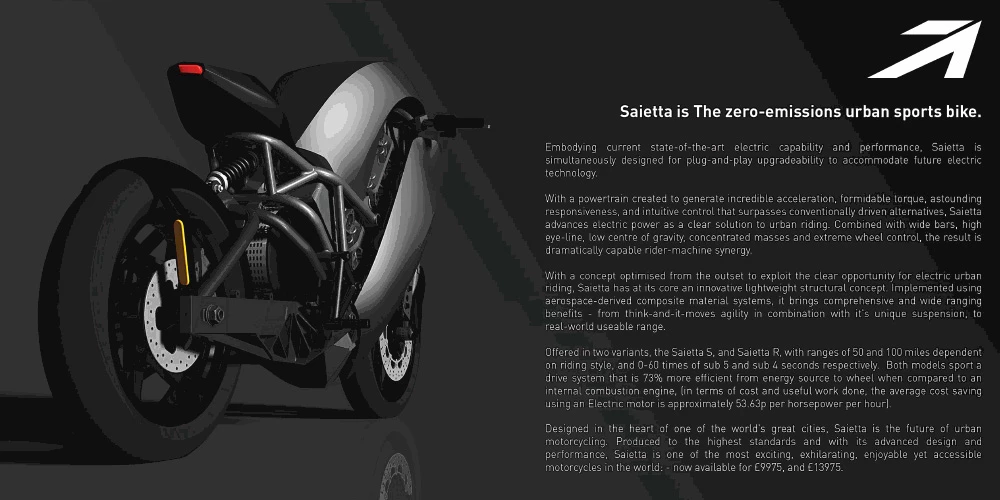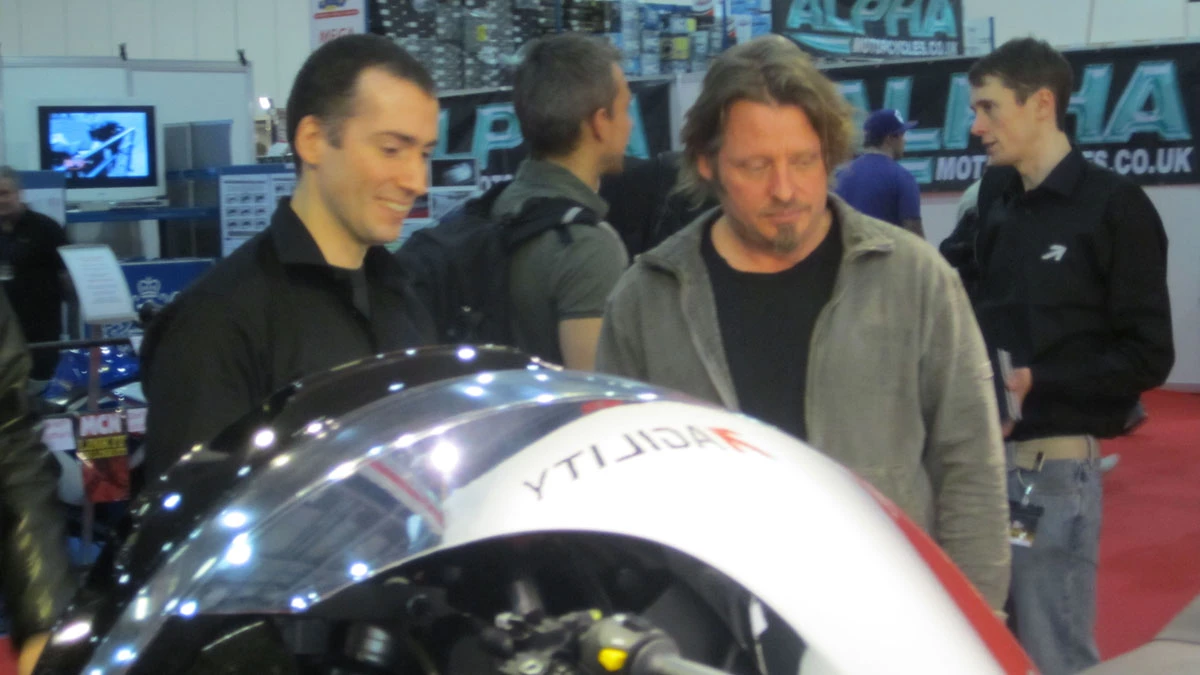Agility will never be accused of sticking to tradition for tradition's sake. Freed from the constraints of complicated combustion engines and all the associated tackle, designer Lawrence Marazzi has unveiled a brand new, fully electric British motorcycle that turns the rules of motorcycle design on their head. The Saietta features a hossack-inspired front end, an eye-popping fairing design and a crazy degree of mass centralization that could only be achieved with battery cells. Billed as a guerrilla commuter, it promises to be a very exhilarating ride. See the video after the jump to hear Marazzi talk about the design process, the future of electric motorcycles and the unique properties of the Saietta.
Electric motorcycles are as common as petrol-powered scooters in places like Shanghai, where motorcycles are seen purely as cheap transport. In the west, where motorcycles are more a pleasure purchase, we tend to demand a lot more from our machines in terms of performance and handling.
And it's coming. As Agility's Lawrence Marazzi points out, the automotive industry is small and stagnant when viewed against the massive consumer electronics industry, and all those consumer electronics companies are working to develop the cheaper, smaller, longer-lasting, higher-energy battery cells that will soon push electric vehicles into the mainstream.
Still, for now, most electric motorcycles are limited to around a 100-mile (161 km) range per charge – and that's more than enough for the average daily commute. So companies like Agility are looking at how to pack as much giggle factor as possible into a daily ride.
The company's first bike is the Saietta, unveiled on Thursday in the UK. Specs are scarce and Agility is a little cagey about revealing them at this point – but two models will be available, one with an approximately 50-mile (80.5 km) range, another with a 100-mile range. The only difference between these bikes will be the battery packs.

How much power do you want?
Horsepower is not yet stated, but as Marazzi points out, "it's kind of like deciding what homepage you want on your computer … we've got a certain amount of flexibility there, and we've designed for an envelope that covers both ends of the spectrum."
What he means is that, using downloadable power map options, you can more or less choose your own horsepower rating and power curve. It will be up to the owner how much power they wish to use, or if they'd prefer to conserve battery for additional range. But as a guideline, the Saietta will be released with the capability of hitting 60mph (96.5 km/h) in 4 seconds, roughly the equivalent of a midrange naked.
Of course, that doesn't tell the whole story. Like all electrics, there doesn't have to be a power curve in the way that we're used to with petrol bikes. So when a user decides to select a setting that enables full power from a standing start, it's very easy to flip the Saietta and land on your backside, as one test-rider found out early on in the process.
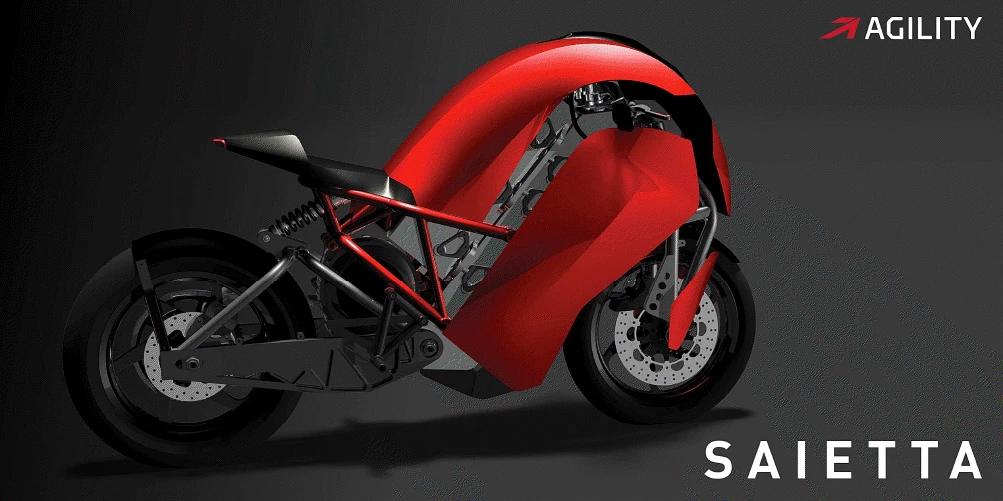
Making it handle
Handling has been a key focus for Marazzi in the bike's design; the odd-looking hossack-inspired monoshock front end and short wheelbase have been used to target the light, fast urban flickability of a motored or middleweight naked bike.
Crucially, Marazzi points out that the bike's appearance has been built around its handling capabilities, and not the other way around. Agility engaged top suspension designers from four major suspension companies very early in the design process and gave them free reign to design their dream suspension setups without regard for traditional looks.
This means there's no mechanically ugly suspension linkages that hide the shocks away, sacrificing performance for looks. Instead, the damping experts have been given free reign over the bike to manage traction in the most effective way possible.
Agility has not finalized commercial arrangements with suspension suppliers yet, so Marazzi is unwilling to disclose who he's been working with in this regard, but he says that in addition to the base suspension supplied with the stock machine, each of the companies will offer uprated shocks with higher specs to customers that want to push the handling further. Also, because the front and rear shocks are the same unit, he expects customers to benefit from economies of scale.
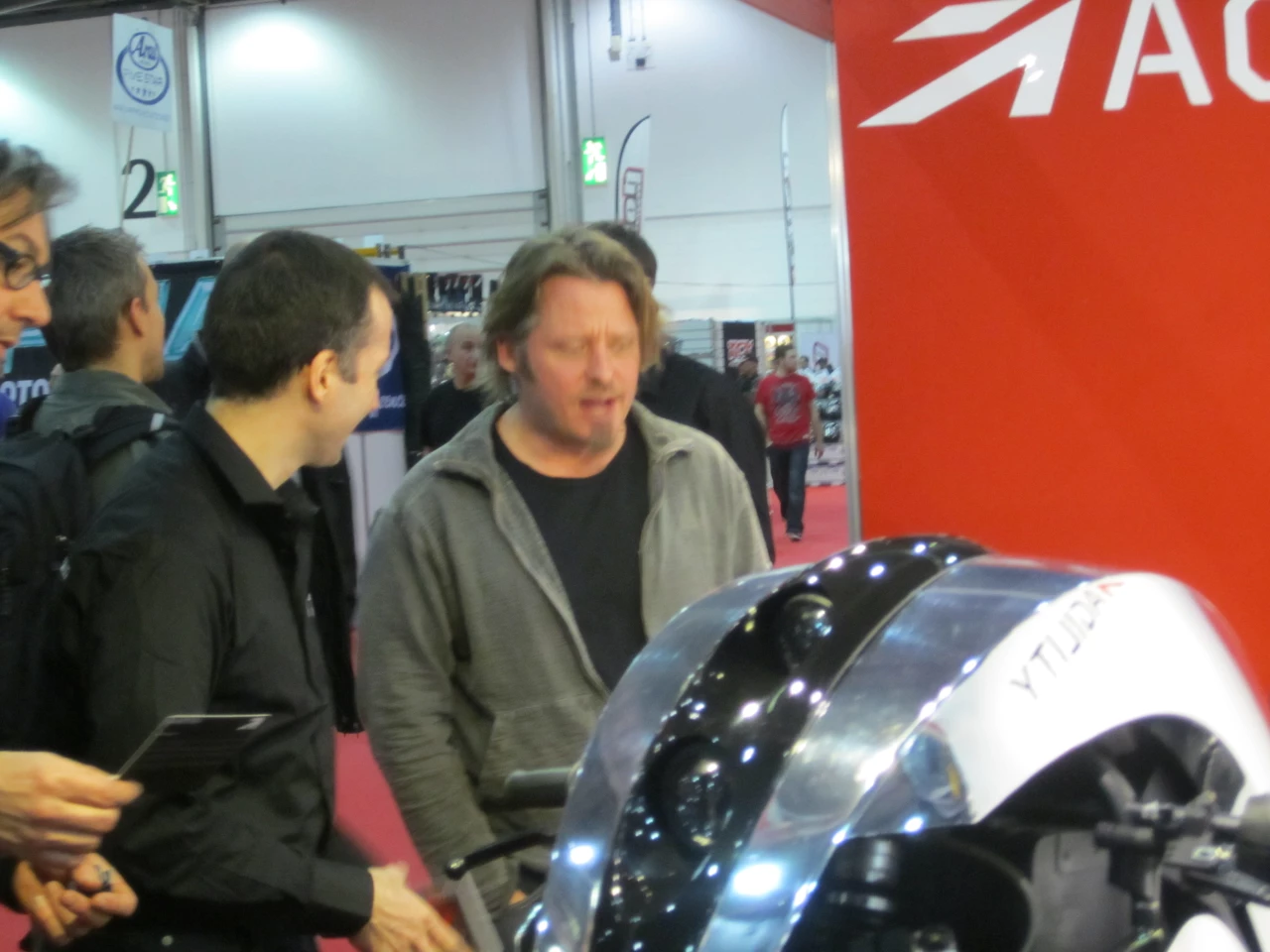
Humpback 'tanks' and mass centralization
Of course, a great suspension setup isn't the only thing to think about when designing a bike with razor-sharp handling. Mass centralization has been a mantra for the motorcycle industry as a whole – especially the sportsbike segment – for the last ten years or more.
With mass packed more tightly around its central point, and that point kept at the optimal spot on the bike, it becomes easier to flick the bike from side to side and change directions.
Marazzi believes electric bike manufacturers will have a huge advantage in this area – they simply have to place an engine and a number of flexibly-shaped battery packs, where a traditional motorcycle designer has to find room for an engine, gearbox, cooling system, airbox, exhausts and all the many other accoutrements of a gasoline motor.
Faced with a clean sheet, Marazzi was able to study the center of mass and mass centralization of a number of leading sportsbikes, and then place his battery packs in such a way as to give the Saietta exactly the same center of mass, but achieve significantly more mass centralization – hence its exciting flickability factor around town.
The petrol engine and its hangers-on have contributed in no small way to the accepted shape of the modern motorcycle. Telescopic forks, for instance, might not be the most efficient way to manage front tire traction, but they're small and easy to design around when you have a radiator and a set of header pipes to fit between the engine and the front wheel.
Marazzi had no such things to worry about, freeing him up to use the hossack-like front end, while still maintaining an exceptionally short wheelbase.
Where did the battery cells end up, then? Well, they actually became the central structure of the bike, replacing a traditional frame to a large degree. And while this meant they had to rise up significantly higher than a traditional petrol tank, Marazzi points out that riding the Saietta is much like sticking a tank bag on a sportsbike – it doesn't get in the way, and the space in front of the rider's chest is more or less wasted up until the point where you're dealing with very high speeds.
The looks of the Saietta are not going to appeal to a lot of people straight off, but then we're looking at a whole new category of motorcycle; the electric powercommuter, and if its handling and urban-guerrilla fun factor live up to its billing, the design may well grow on people.
Downloading upgrades
Marazzi sees gasoline bikes of today as almost comically inflexible due to their basic engine characteristics.
His plan is to make simple plug-in upgrades easily available, and have the bike management software easy to tweak through downloadable options.
Power curves and throttle maps are just the beginning; Marazzi says you'll be able to setup your own regenerative braking, ABS, wheelie control, traction control and even the sound the engine makes if you don't like the turbine-like roar of the bare electric engine.
While there are patent claims blocking him from elaborating further, he says there's definitely going to be the option to program the machine to sound like a range of petrol vehicles if a rider needs the noise factor to get the adrenaline glands pumping – although in my experience, the wonder of quick, near-silent acceleration is its own thrill.
The Saietta pictured is only a production prototype, but Agility isn't sitting on its hands. First customer deliveries are planned for as soon as April 2011, and test riders should be available earlier than that in the UK.
Prices will be around US$16,200 for the 50-mile version and US$22,650 for 100 miles, reflecting the harsh reality of current lithium battery prices – but we're still on the leading edge of the electric wave here in the Western world, and the Saietta offers a glimpse forward into a world where traditional bike design principles can be left behind.
We wish Marazzi and the team all the best, and look forward to taking the Saietta for a spin. Lots more photos in the gallery, take a look!

